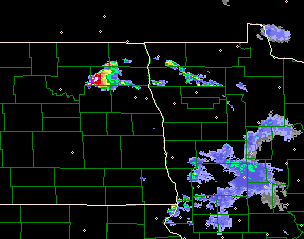 |  | |
After being presented as my senior thesis, then expanded and presented twice more in the spring of 2009, the paper was modified
and submitted to Weather and Forecasting in late July. Reviews came back with the result of accepting with minor revisions. Revisions
were made and the paper was resubmitted in mid-September. On September 21, 2009, the paper was accepted for publication into Weather and
Forecasting under the title of "Spring and Summer Midwestern Severe Weather Reports in Supercells Compared to Other Morphologies"! The paper
was published in the March 2010 issue of Weather and Forecasting. Here is a citation:
Duda, J. D., and W. A. Gallus Jr., 2010: Spring and summer Midwestern severe weather reports in supercells compared to other morphologies. Wea. Forecasting, 25, 190 - 206.
 |  | |
| This study is an expansion of Gallus et al. (2008) (hereafter, G08), in which all convective systems that occurred within a
ten-state region that covers parts of the Midwest and great plains between 1 Apr 2002 and 31 Aug 2002 were classified according to their
dominant morphology. Severe weather produced by each system was associated with each morphology. Archived radar imagery was used to
classify systems, which had to meet specific criteria to be classified. This study uses data in the same region as in G08, but uses data
from the year 2007 instead. The same nine morphologies that were used in G08 are used in this study, which includes
non-linear
convective events, isolated cells, clusters of cells, broken lines of cells, squall lines with no stratiform precipitation, trailing
stratiform precipitation, parallel stratiform precipitation, and leading stratiform precipitation, and bow echoes. Cellular systems
that contained supercells were added as morphologies to incorporate the effects that supercells have on the type of severe weather
produced. The results of this study indicate that the trends exhibited by the systems in G08 also are exhibited by the systems in this study quite closely. It is also confirmed that supercellular systems produce severe weather more frequently, and also produce more intense severe weather. |
A Climatology of Severe Weather Reports as a Function of Storm Morphology (PDF)
A Climatology of Severe Weather Reports as a Function of Storm Morphology in the Central U.S. (PowerPoint)
Some of the figures in the PDF may be difficult to view. Therefore, they are included in the links below.